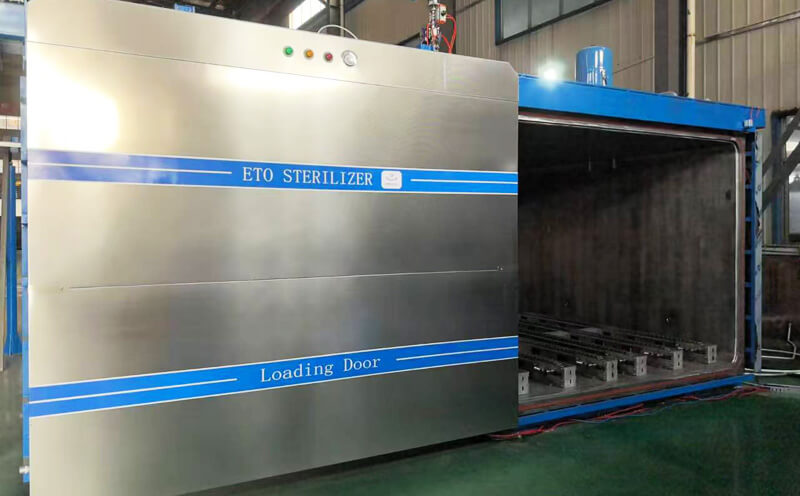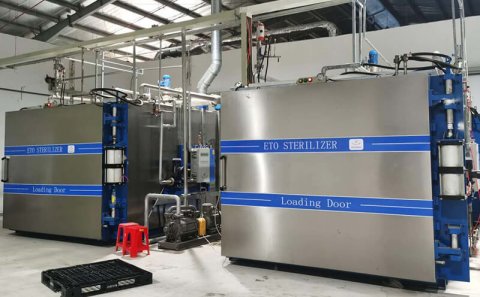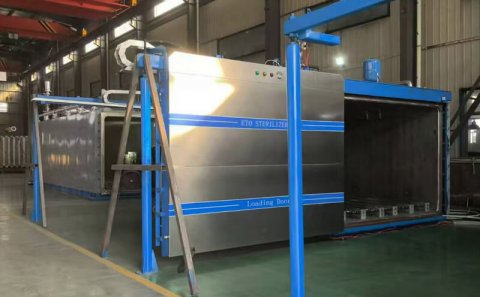
1. Safety door lock
Once the sterilization procedure starts, the chamber of the sterilizer is locked mechanically and electronically. The vacuum state in the process of sterilization and ventilation also makes the chamber door of sterilizer in a tight state. Only after the ethylene oxide in the chamber of the sterilizer is effectively discharged, and the air pressure in the chamber returns to the normal pressure state, the door of the sterilizer can be opened to ensure that there will be no leakage of ethylene oxide gas and no operation of personnel during the sterilization process.
2. Gas leakage pre inspection / interruption performance
At the beginning of the sterilization procedure, the sterilization system automatically monitors the air pressure level in the sterilization chamber to ensure that the air pressure meets the requirements. If the effective negative pressure cannot be reached, it will not enter the sterilizer cavity, and the program will automatically terminate and report an error.
3. Ethylene oxide mechanical and electronic interlock puncture device
When the air tank is placed in the chamber of the sterilizer, it is pierced by an air valve which works only when the predetermined vacuum condition is reached. Only when the air tank is correctly placed in the chamber of the sterilizer, the interlock device is ready, and the chamber of the sterilizer reaches the effective negative pressure state, the air tank can be punctured, and any mechanical failure will not affect the effective and play of this function.
4. Continuous gas leakage detection device
The sterilization system is equipped with a special Wen pump, which makes the whole sterilization process in a negative pressure state (different from the half mixed EO gas sterilization system in a positive pressure state). If the chamber of sterilizer leaks in the process of sterilization and air flows into the chamber, the continuous gas leakage detection device can detect the change of air pressure in the chamber acutely, automatically interrupt the sterilization process, and enter the residual removal procedure in advance, so as to ensure the use safety and avoid the contact risk of ethylene oxide to the maximum extent.
5. Built in ventilation design
After the gas exposure phase, the control system also detects the safety and effectiveness of the ventilation phase through the vacuum level. If the vacuum does not meet the standard, the program will be automatically interrupted and the sterilizer will be locked. The chamber door can not be opened until the sterilizer can ventilate normally after the fault is removed. The built-in ventilation design also avoids the possible exposure of ethylene oxide gas during the transportation of sterilized articles without complete ventilation treatment to the independent ventilator.
6. Program fault code / man machine dialogue
When the sterilization control system detects any incorrect status, it will display an error message. These error messages not only explain the cause of the fault, but also clearly indicate whether appropriate preventive measures should be taken or mechanical maintenance and correction should be carried out.






45 cubic eo sterilizer FAQ...